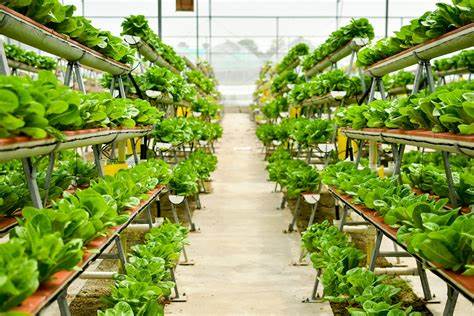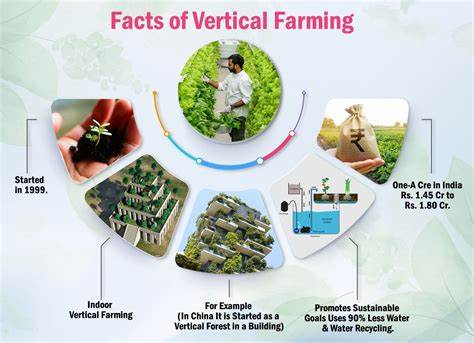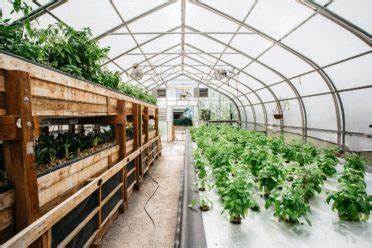
Revolutionizing Food Production: A Comprehensive Comparison of Vertical Farming and Traditional Agriculture
Introduction
The pressing issues of global population growth and resource scarcity have made innovative and sustainable farming methods more crucial than ever. This article aims to delve into the significant disparities between vertical farming and traditional agriculture, with a focus on their environmental impact, resource efficiency, crop yield, and seasonal availability. By examining case studies, current trends, challenges, and future prospects, we can gain a deeper understanding of the potential implications of vertical farming and its relationship with traditional agriculture.
Historical Background: Evolution of Farming Practices
Traditional agriculture has played a vital role in human civilization for thousands of years, constantly evolving to meet the demands of society. However, it has also led to detrimental environmental consequences, including deforestation and soil degradation. As a response to these challenges, vertical farming has emerged as a revolutionary approach to sustainable food production.
Key Concepts and Definitions
Vertical farming involves cultivating crops in vertically stacked layers using controlled environments and artificial lighting. This method maximizes space utilization while minimizing land use, allowing for year-round crop production. In contrast, traditional agriculture relies on natural sunlight and traditional farming practices, cultivating crops in open fields or greenhouses. Understanding these key concepts is essential for comprehending the implications of vertical farming in comparison to traditional agriculture.

Main Discussion Points
Environmental Impact: Preserving the Planet
Vertical farming offers significant advantages in reducing land use and environmental degradation. By growing crops in vertically stacked layers, vertical farms require considerably less land compared to traditional agriculture, preserving natural habitats and preventing deforestation. Furthermore, vertical farming minimizes soil degradation by eliminating traditional soil-based cultivation methods. In contrast, traditional agriculture has contributed to deforestation and soil degradation due to the expansion of farming areas.
Resource Efficiency: Optimizing Water and Energy Usage
Vertical farming excels in resource efficiency, particularly in terms of water and energy usage. Advanced irrigation systems in vertical farms deliver precise amounts of water directly to plant roots, minimizing water wastage, which is especially crucial in water-scarce regions. Additionally, vertical farming employs energy-efficient LED lights instead of relying solely on natural sunlight, resulting in reduced energy consumption. On the other hand, traditional agriculture often requires excessive amounts of water and energy, leading to resource depletion and increased environmental impact.
Crop Yield and Quality: Maximizing Productivity
Vertical farming has the potential to achieve higher crop yields in smaller spaces compared to traditional agriculture. By utilizing advanced technologies such as hydroponics or aeroponics, vertical farms can create ideal growing conditions that maximize plant growth and yield. The controlled environment of vertical farming allows for precise monitoring and adjustment of factors like temperature, humidity, and nutrient levels, resulting in optimal crop growth. However, further research is needed to fully understand the nutritional differences between crops grown in vertical farms and traditional agriculture.
Seasonal Availability and Crop Diversity: Overcoming Limitations
Vertical farming provides a viable solution to the limitations of traditional agriculture in terms of seasonal availability and crop diversity. With controlled environments, vertical farms can produce crops year-round, eliminating constraints imposed by seasonal changes. This ensures a consistent and reliable supply of fresh produce regardless of external weather conditions. In contrast, traditional agriculture heavily relies on seasonal variations, leading to limited availability of certain crops during specific times of the year. Additionally, vertical farming allows for the cultivation of a wide variety of crops in a single facility, enhancing crop diversity and addressing consumer demands.

Case Studies or Examples: Demonstrating Success
Real-world examples of successful vertical farming projects showcase the immense potential of this innovative farming method. Companies like AeroFarms and Plenty have established vertical farms in urban areas, producing large quantities of high-quality, locally grown produce. These projects demonstrate the feasibility and scalability of vertical farming, providing valuable insights into its benefits and challenges. Conversely, traditional agriculture practices vary across regions, each facing unique challenges such as water scarcity, harsh climates, or limited arable land. Understanding these traditional agriculture practices is crucial to evaluating their sustainability and potential for improvement.
Current Trends or Developments: Advancements in Farming
Vertical farming continues to evolve, driven by technological advancements and research findings. Recent trends include the integration of artificial intelligence and robotics into vertical farming systems, enhancing efficiency and productivity. Furthermore, ongoing research explores the potential benefits of vertical farming beyond vegetable cultivation, such as the production of medicinal herbs and even fish. In traditional agriculture, advancements focus on sustainable practices like organic farming, precision agriculture, and the use of renewable energy sources. These developments contribute to minimizing the environmental impact of traditional agriculture while improving resource efficiency.
Challenges or Controversies: Overcoming Obstacles
Implementing vertical farming on a large scale poses several challenges and limitations. High initial investment costs, technical complexities, and the need for skilled labor are among the obstacles faced by vertical farming initiatives. Controversies and differing viewpoints also surround the scalability and profitability of vertical farming compared to traditional agriculture. Critics argue that vertical farming may not be able to replace traditional agriculture entirely due to limitations in crop diversity and nutritional value. Striking a balance between these perspectives and addressing the challenges are essential for the successful integration of vertical farming with traditional agriculture.
Future Outlook: Transforming Food Production
The potential future implications of vertical farming are vast and hold promise for transforming the landscape of traditional agriculture. As technology continues to advance and costs decrease, vertical farming could become an integral part of food production worldwide. The integration or collaboration between vertical farming and traditional agriculture may provide opportunities for sustainable and efficient farming practices. Together, these methods can work in harmony to meet the growing demands of a global population while reducing the environmental impact of food production.

Conclusion
Vertical farming vs. traditional agriculture signifies a critical shift in food production practices. With its potential to revolutionize farming, vertical farming offers numerous benefits, including reduced land use, resource efficiency, increased crop yield, and year-round availability. However, challenges and controversies must be addressed to ensure the successful implementation of vertical farming on a large scale. By recognizing the significance of this topic and exploring its various aspects, we can pave the way for a sustainable and food-secure future.
References
Despommier, D. (2010). The vertical farm: feeding the world in the 21st century. Thomas Dunne Books.
Lowry, C. (2020). Vertical farming: Feeding the future. National Geographic.
Specht, K., Siebert, R., Hartmann, I., & Freisinger, U. B. (2014). Urban agriculture of the future: an overview of sustainability aspects of food production in and on buildings. Agriculture and Human Values, 31(1), 33-51.
Zou, X., Lin, J., & Martinez, A. (2020). Vertical farming systems: A review on technological advancements and future challenges. Computers and Electronics in Agriculture, 179, 105837.




